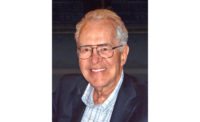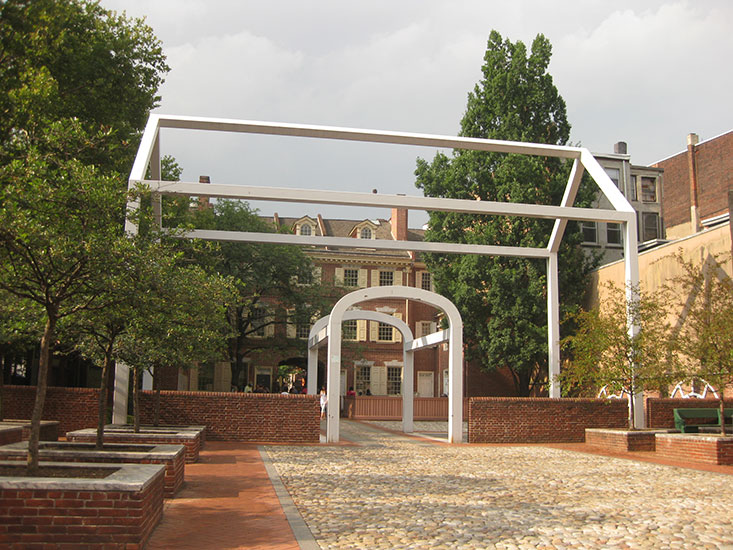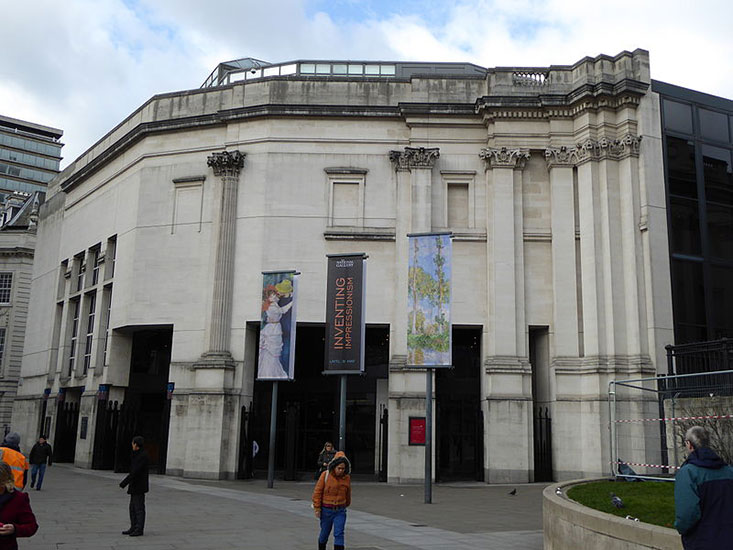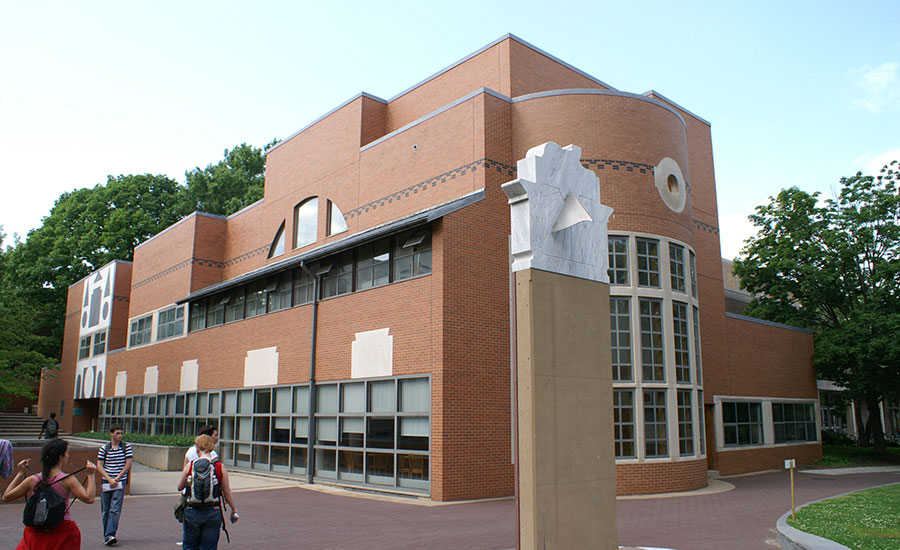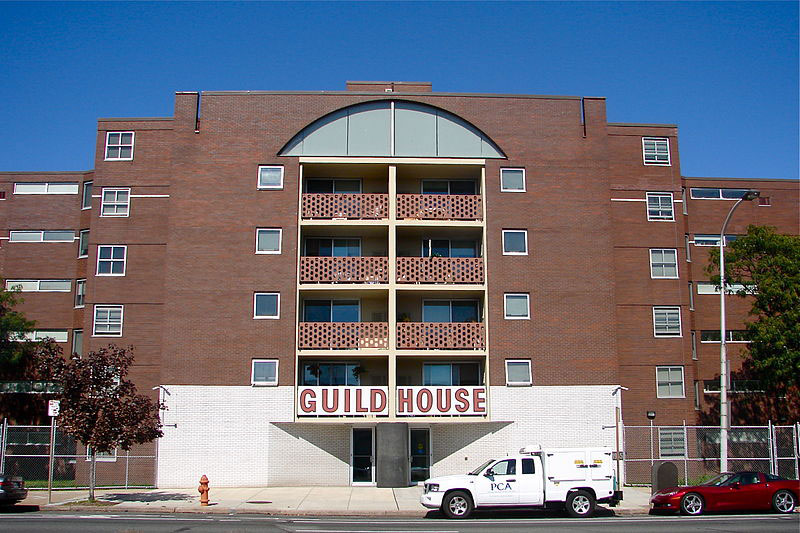Obituary: Robert Venturi, 1925–2018

Vanna Venturi House, Chestnut Hill, Philadelphia (1964)
Photo © Carol M. Highsmith, the Library of Congress

Robert Venturi and Denise Scott Brown
Photo courtesy the American Institute of Architects

Franklin Court, Philadelphia (1976)
Photo © jalbertgagnier

Sainsbury Wing at the National Gallery, London (1991)
Photo © Ardfern

Gordon Wu Hall at Princeton University, New Jersey (1983)
Photo © jpmm

Guild House, Philadelphia (1964)
Photo © Smallbones

Curtis Institute of Music, Lenfest Hall, Philadelphia (2011)
Photo courtesy Tom Crane/VSBA







Architect Robert Charles Venturi Jr. died Tuesday, September 18, 2018, at the age of 93, from complications of Alzheimer's disease in his home in Philadelphia. According to his son Jim Venturi, he was free of pain and listening to his favorite Beethoven piano sonatas. With him was his wife and longtime collaborator architect Denise Scott Brown.

Hailed as a catalyzing force of the Postmodern architecture style, the Princeton-trained architect published his groundbreaking treatise, Complexity and Contradiction in Architecture, in 1966, six years after founding his first firm with William Short. (John Rauch replaced Short in 1964.) The text is credited with redirecting the profession’s prevailing Modernist sensibilities toward a more sophisticated, historically referential approach; in the book’s original preface, Venturi wrote, “As an architect, I try to be guided not by habit but by a conscious sense of the past—by precedent, thoughtfully considered."
In 1964, Venturi completed the seminal project of his career: the Vanna Venturi House in Chestnut Hill, Pennsylvania, which he designed for his mother and demonstrates many of the principles he espoused in Complexity and Contradiction.
Tributes
Colleagues remember Robert Venturi
Venturi and Scott Brown were married in 1967; that year she officially joined the firm, becoming a partner in 1969. (The practice became known as Venturi, Scott Brown, and Associates in 1989, and is today called VSBA.) The pair, along with Steven Izenour, published the influential tome Learning From Las Vegas: The Forgotten Symbolism of Architectural Form in 1972—another milestone in architectural theory. Venturi and Scott Brown also worked together on such landmark projects as the Allen Memorial Art Museum in Oberlin, Ohio, and Franklin Court in Philadelphia (both 1976), and the Sainsbury Wing of the National Gallery in London (1991).

Photo © Frank Hanswijk
Venturi received the 1991 Pritzker Architecture Prize, as well as the 2016 AIA Gold Medal —an accolade that, unlike the Pritkzer, honored both Venturi and Scott Brown.
Born in Pennsylvania on June 25, 1925, Venturi was raised a Quaker. He received both his bachelor’s and master’s degrees from Princeton University, graduating summa cum laude in 1947, then receiving his Master of Fine Art degree in 1950. From 1954 to 1956, he studied at the American Academy in Rome as a Rome Prize Fellow.
Upon returning to the United States, Venturi taught a course in architectural theory at the University of Pennsylvania’s School of Architecture; and throughout the rest of his career lectured at institutions including Yale, Princeton, Harvard, University of California at Los Angeles, Rice University and the American Academy in Rome.
A film Bob and Denise directed and produced by Jim Venturi is expected to be released next year.
Tributes to Robert Venturi:
Martino Stierli, Philip Johnson Chief Curator of Architecture and Design at The Museum of Modern Art:
We have lost a giant, but also an incredibly warm, witty, and generous human being. I remember once cooking a simple pasta with tomato sauce for Bob and Denise in their beautiful Philadelphia home, when I had just started working on my Ph.D. thesis on their “Learning from Las Vegas.” When Bob saw the sauce, he commented: “How exotic!” He really did see the extraordinary in the ordinary. Bob has been part of my intellectual journey ever since. Through his love for architecture, his discerning eye, and his rhetorical wit he forever changed how we think and talk about architecture. One of his most famous drawings illustrated his concept of the decorated shed with the words “I AM A MONUMENT”. That he is.
Stephen Kieran and James Timberlake, Founding Partners of KieranTimberlake
James Timberlake and I first met and began working with Bob as graduate students at the University of Pennsylvania. Like most everyone working at the office in the late 1970s, it was Steve Izenour who first drew us in with offers of part-time work. That work later became full time for both of us. I recall that first Christmas vacation in graduate school that I spent working at the office on an exhibition at the Renwick Gallery: Signs of Life: Symbols in the American City. There was no money for a Christmas bonus, but Bob gave me something much more valuable, a signed copy of Learning from Las Vegas. It will always be a treasure for me. For those of us coming of age in the disaffected and tumultuous times of the early 1970s, he was an antidote for what ailed America. He showed us a way forward that could reconnect architecture to real people in real cities with real problems and aspirations. He was a wonderful mentor who taught us the difference between 1/4 inch and 1/2 inch and the necessity to iterate all design again and again and again. We continue to reflect, write books, develop exhibitions, and lecture in large measure because of the example he set for us of what it means to be an architect. We are forever in debt to him for his example.
Paul Goldberger. Architecture Critic
My life as an architecture critic began with Robert Venturi and Denise Scott Brown, who I met through the good graces of Vincent Scully, my professor at Yale, who encouraged me to do something absurd, which was to propose a piece on these architects, at that point barely known outside the profession, to The New York Times Magazine. Bob and Denise received me graciously—I may not have had much street cred as a journalist, but I was Vince’s student, so it was okay—and talked with warmth and candor about their work, about their lives in Philadelphia, and about the firm that was just beginning to be known for more than Bob’s Complexity and Contradiction in Architecture. It was so long ago that Learning from Las Vegas had not yet been published, and Bob was still preoccupied with fighting the view of critics like Peter Blake, who saw him as no more than an apologist for mediocrity, which of course missed the point entirely, which is that he was the greatest mannerist of our age. It was so long ago that when the piece was published, the copy editors at The New York Times changed all my references to “Scott Brown” to “Mrs. Venturi,” which now makes me cringe. But much more important than any notion that writing about Bob and Denise was the foundation stone of my professional career is the fact that they and their work have been, and continue to be, at the core of what I believe architecture to be. Bob’s sheer love of buildings, his brilliant eye, his understanding of the street, his wry wit combined with his glorious enthusiasm, his belief that the ordinary things we build can tell us as much about who we are and what we want than any monuments we erect—these all have inspired me in the decades since that first meeting on a summer afternoon, and they inspire me still. His influence is vast, and deep. Joan Didion once said that “The everyday is all there is,” and Bob Venturi showed us what that concept meant for architecture, and the profound understanding and noble aspirations that lay within it.
In the coming days, Architectural Record will publish a statement from the family, along with other tributes from Venturi’s colleagues and associates. To contribute your remembrances, comment below.
Editor's Note: A previous version of this story indicated September 17 as the date of death.


